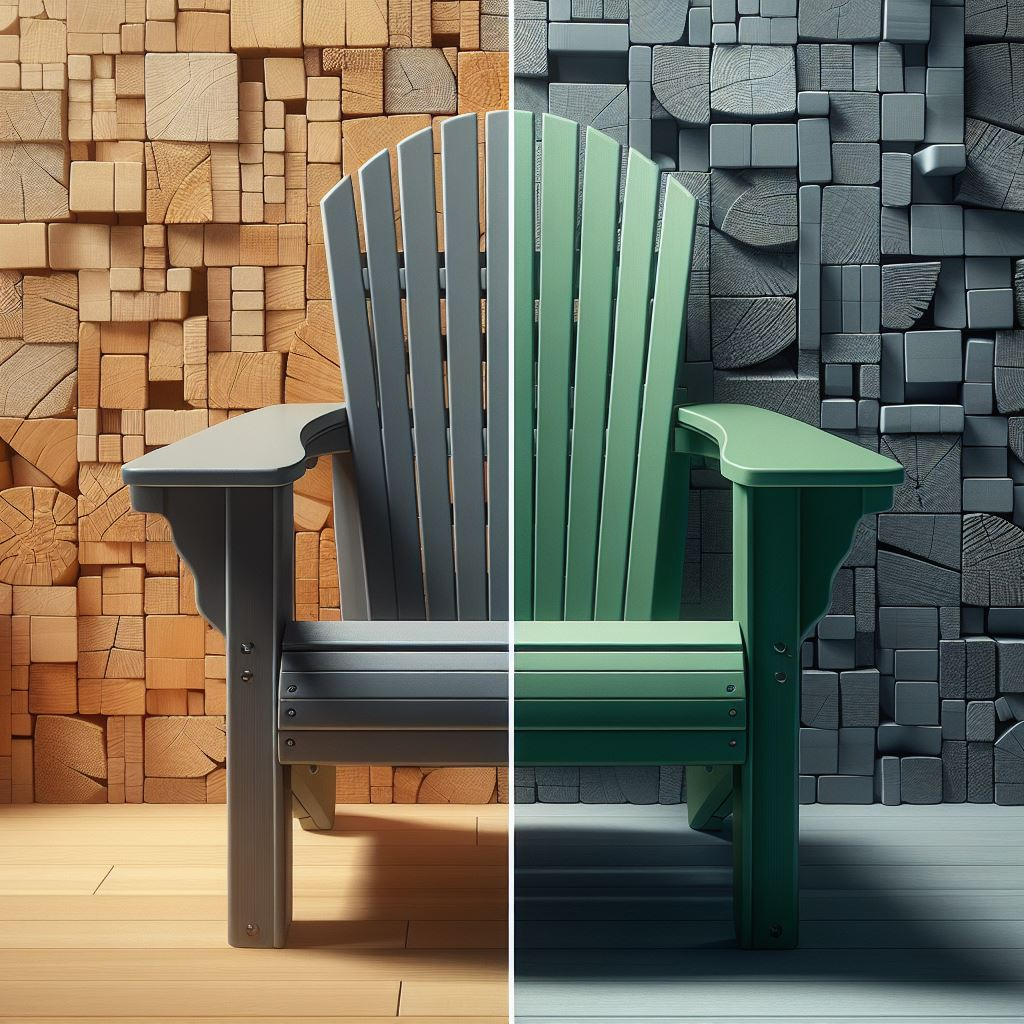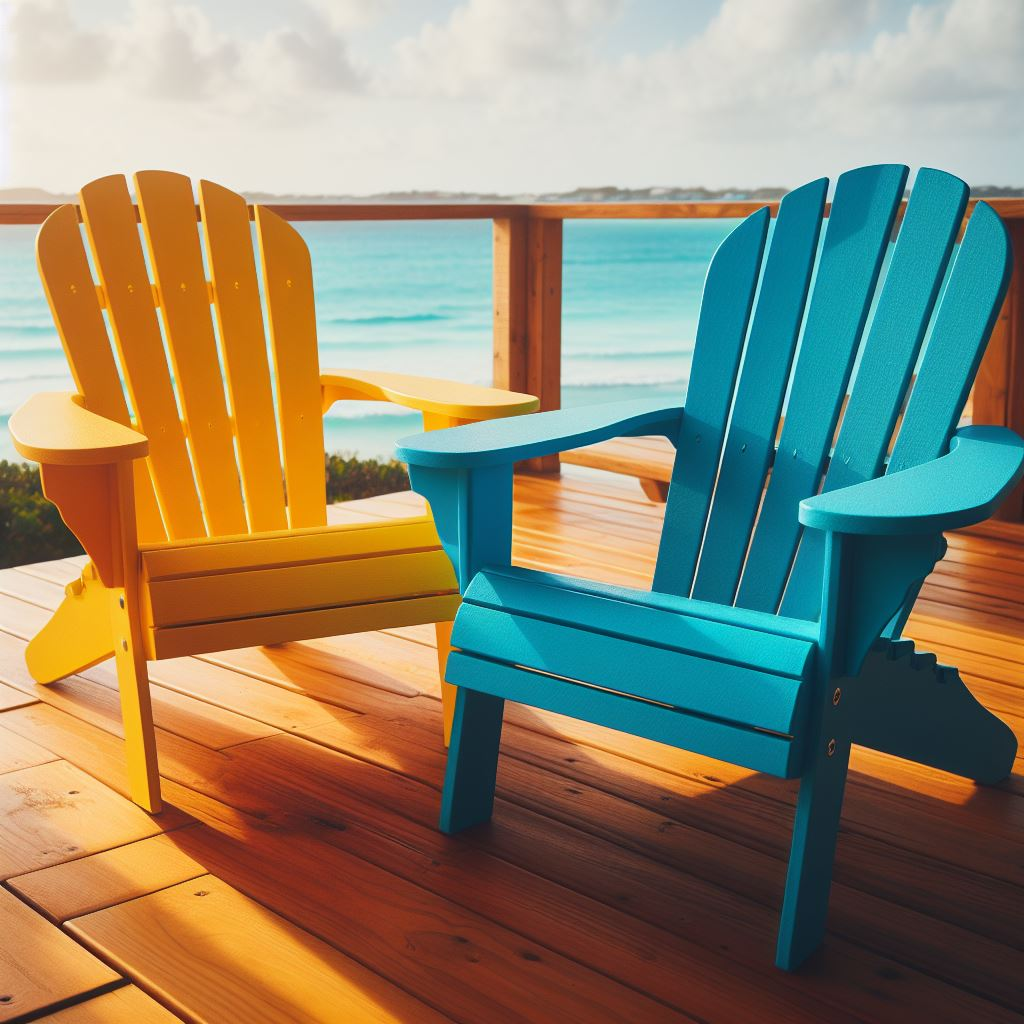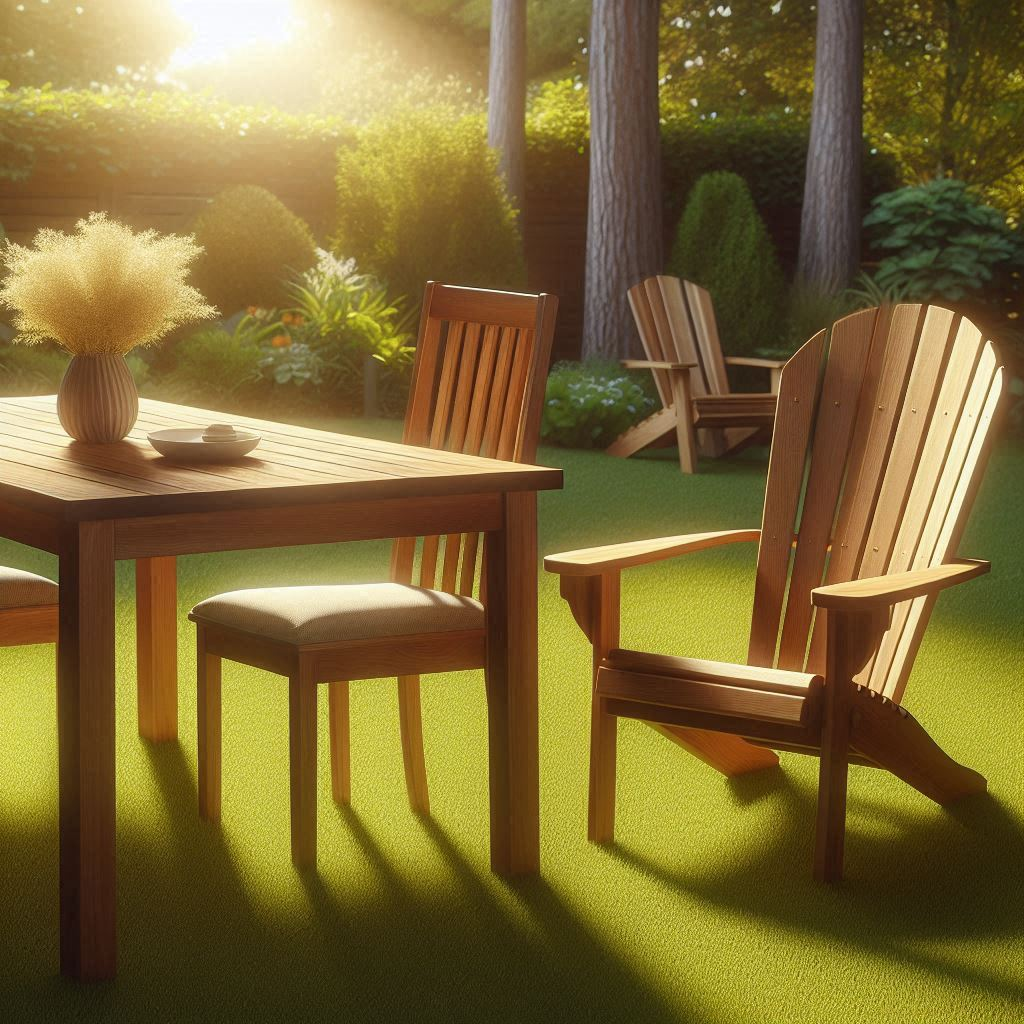Costaelm Vs Polywood: Picking The Right Outdoor Material For Your Home
Choosing outdoor furniture or decking materials can feel like a big decision, especially with so many options out there. You want something that looks good, lasts a long time, and fits how you live your life outside. It’s almost like trying to pick the perfect spot for a relaxing afternoon, maybe somewhere with wide, open views, or a quiet corner where you can just unwind. That feeling of finding just the right fit for your outdoor space is pretty special, you know?
Today, we are going to look closely at two popular choices: Costaelm and Polywood. Both materials promise durability and low upkeep, but they go about it in different ways. Understanding their differences can really help you make a smart choice for your patio, deck, or any outdoor area you are planning.
We will break down what makes each one unique, from how they look and feel to how much care they need. So, if you are thinking about sprucing up your outdoor living, this information might be very helpful for you.
Table of Contents
- What is Costaelm?
- What is Polywood?
- Comparing Costaelm and Polywood
- Addressing Common Questions
- Making Your Choice
What is Costaelm?
Costaelm is a material that has gained some attention in the outdoor living market. It is typically an engineered composite, designed to give you the beauty of natural wood without some of its typical drawbacks. You see, it aims to capture the look and even the grain patterns that people often love about real timber.
This material is often made from a mix of wood fibers and plastic polymers. This blend helps it resist things like moisture and insects, which can be a real problem for pure wood. In a way, it tries to get the best of both worlds, offering a warm, inviting appearance.
You might find Costaelm used in various outdoor settings. It shows up in furniture, decking boards, and sometimes even decorative elements for gardens. Its goal is to provide a material that looks quite natural, yet holds up well to the elements, so it's a bit of a compromise between traditional and modern options.
Many folks appreciate Costaelm for its aesthetic appeal. It comes in a range of colors and finishes that mimic different wood types, which is nice. This allows you to pick a shade that really fits your home's style, giving a cohesive look to your outdoor spaces.
It's generally considered a good option for those who want a more traditional wood appearance but desire less work. This material often aims to reduce the need for constant sealing or painting. So, it could be a practical choice for many homeowners.
What is Polywood?
Polywood, on the other hand, is a well-known brand of outdoor furniture and lumber made from high-density polyethylene (HDPE) plastic. This plastic is often sourced from recycled milk jugs and other containers. It is quite interesting how they turn everyday waste into something so durable for your patio, you know?
This material is solid through and through. It does not splinter, crack, chip, peel, or rot, which is a big plus for outdoor use. Polywood is also colored all the way through, meaning scratches usually do not show as much, and the color tends to stay vibrant for many years, which is very appealing.
You will find Polywood used extensively in outdoor furniture like chairs, tables, benches, and even swings. Its robust nature makes it a favorite for places that get a lot of sun or rain, or just heavy use. It is a very practical choice for busy households or commercial settings, too.
The look of Polywood is distinct. While it can be designed to resemble wood planks, it has a more uniform, slightly matte finish that is characteristic of plastic lumber. It comes in a wide array of colors, from bright, fun shades to more subdued, natural tones, so there are many options available.
Basically, Polywood is all about low maintenance and extreme durability. If you are looking for something you can put outside and more or less forget about, this material is often a top contender. It is quite resistant to fading and pretty easy to clean, which is a huge benefit for many people.
Comparing Costaelm and Polywood
When you are trying to decide between Costaelm and Polywood, it really comes down to what you value most for your outdoor living area. Both have their strong points, but they serve slightly different purposes, you see. Let's break down some key areas to help you compare them.
Durability and Longevity
Costaelm, being a composite, is designed to be much more durable than natural wood. It resists rot, insect damage, and moisture absorption better than traditional timber. This means it can stand up to various weather conditions without falling apart quickly, which is a good thing.
However, Polywood is arguably at the top of the list for outdoor material toughness. It is virtually impervious to weather, including extreme heat, cold, and moisture. It does not absorb water, so it will not rot, splinter, or crack from freezing and thawing cycles. It is really built to last for decades, often coming with very long warranties.
In terms of how long they might last, Polywood generally has an edge. Its solid plastic composition means it holds up incredibly well over many, many years. Costaelm, while durable, might show more signs of wear over a very long period, especially if the wood fibers in its composite start to break down a little from UV exposure, you know.
For areas with harsh weather or intense sun, Polywood tends to be the more resilient choice. It just keeps its integrity and appearance better in those tough conditions. Costaelm is tough, but Polywood is pretty much indestructible in typical outdoor settings.
Appearance and Style
Costaelm aims to replicate the natural beauty of wood. It often has a textured surface that feels more like real timber, and its color variations can mimic wood grain quite well. If you love the classic, organic look of wood but want less fuss, Costaelm could be a really appealing option for you.
Polywood, by contrast, has a more consistent, uniform appearance. While some Polywood pieces are designed to look like painted wood, they still have that distinct plastic lumber feel. It is a clean, modern look that many people appreciate, especially for contemporary outdoor spaces. Its color palette is also quite broad, from bright to muted tones.
When it comes to how they age, Costaelm might show subtle changes over time, much like wood, but without the significant degradation. Polywood, on the other hand, is known for retaining its color remarkably well, with minimal fading even after years in the sun. It is a very stable material in terms of its look.
So, if a truly natural, wood-like aesthetic is your priority, Costaelm might be more to your liking. If you prefer a consistent, vibrant color that stays true for years, and a more modern, clean feel, Polywood is often the better choice. It really just depends on your personal taste.
Maintenance Needs
This is where both materials shine compared to natural wood, but there are still some differences. Costaelm needs much less maintenance than traditional wood. You generally do not have to stain, seal, or paint it regularly, which saves a lot of time and effort. A simple cleaning is usually all it takes to keep it looking good.
Polywood is famously low maintenance. It truly requires almost no upkeep beyond occasional cleaning. You can usually just wipe it down with soap and water, or even power wash it gently. It does not absorb liquids, so spills are easy to clean up, and mildew has a tough time growing on it, too.
With Costaelm, you might want to check for any minor surface wear over the very long term, perhaps a slight dulling of the finish in high-traffic areas. Polywood, by comparison, typically just needs a wash to look brand new again. It is quite remarkable how little attention it demands.
For those who want the absolute least amount of work, Polywood is probably the winner here. It is a set-it-and-forget-it kind of material, which is very appealing to busy homeowners. Costaelm is still very low maintenance, just perhaps not quite to the same extreme as Polywood.
Environmental Impact
Costaelm, being a composite, often uses wood fibers that might be sustainably sourced, and the plastic polymers help extend the life of the material. This reduces the need to harvest new wood as frequently. It is a step in a more environmentally friendly direction, in some respects.
Polywood has a very strong environmental story. It is made from recycled HDPE plastic, diverting millions of milk jugs and other plastic containers from landfills each year. This makes it a truly circular economy product, which is something many people care about today. It is a really positive contribution to reducing waste.
When considering end-of-life, Polywood is often recyclable itself, completing the loop. The recyclability of Costaelm can vary depending on its specific composition and local recycling facilities. So, if sustainability is a major factor for you, Polywood often presents a clearer, more direct benefit to the planet.
Many consumers are looking for ways to lessen their environmental footprint. In that regard, Polywood's use of post-consumer recycled materials gives it a very strong position. It is a good feeling to know your outdoor furniture came from something that might have otherwise just ended up as trash.
Cost Considerations
The initial cost of Costaelm can vary quite a bit, depending on the specific product and brand. It is often positioned as a premium alternative to natural wood, so its price point can be higher than some basic wood options but potentially lower than high-end exotic hardwoods. It offers a good value proposition for its blend of aesthetics and durability.
Polywood furniture and lumber are typically a significant upfront investment. They are generally more expensive than many traditional wood or metal outdoor furniture pieces. However, their longevity and near-zero maintenance costs mean they often pay for themselves over time. It is a bit like buying a very reliable car; the initial cost is higher, but you save on repairs and upkeep later, you know?
When you look at the long-term value, both materials offer good returns. Costaelm saves you money on staining and sealing. Polywood saves you even more, as it rarely needs replacing and demands very little care. So, while Polywood might seem more expensive at first glance, its total cost of ownership over decades can actually be quite competitive.
It really depends on your budget and how long you plan to keep the items. If you are looking for something that will last a lifetime with minimal fuss, the higher initial cost of Polywood could be a very wise expenditure. If you want a wood-like look with reduced maintenance at a potentially lower entry price, Costaelm could be a good fit.
Comfort and Feel
Costaelm often has a surface that feels more like real wood, with some texture. This can contribute to a warmer, more natural feel when you touch it or sit on it. It does not tend to get as hot as some darker plastics in direct sun, which is a nice comfort feature.
Polywood has a smooth, consistent feel. While it is very sturdy, some people might find the solid plastic feel a bit different from wood. It can get warm in direct sunlight, especially darker colors, but it usually cools down quickly once the sun moves. It is a very dense material, so it feels quite substantial.
For seating, both materials are solid, so cushions are usually recommended for extended comfort, just like with most outdoor furniture. However, the surface texture and thermal properties might influence your preference. Costaelm might offer a slightly more organic touch, apparently.
Ultimately, the "feel" is a personal preference. Some people love the smooth, cool touch of Polywood, while others prefer the more traditional, wood-like texture of Costaelm. It is often a good idea to try sitting on furniture made from both materials if you can, to see what you like best.
Installation and Assembly
For products like decking, Costaelm typically installs much like wood composite decking. It can be cut, drilled, and fastened with standard woodworking tools. This makes it fairly straightforward for DIY enthusiasts or professional builders to work with. It is a pretty common process.
Polywood furniture often comes in pieces that require some assembly. The hardware is usually stainless steel, designed to resist rust. Assembling Polywood furniture is generally quite simple, with clear instructions. It is usually a matter of bolting pre-drilled pieces together, which is pretty easy for most people.
If you are considering decking, both materials offer ease of installation compared to natural wood, as they are consistent in size and shape. For furniture, Polywood assembly is usually a quick process. Costaelm furniture would likely follow similar assembly methods, depending on the manufacturer. So, neither presents a significant challenge in this area, you know.
Common Applications
Costaelm is often chosen for outdoor spaces where a classic wood aesthetic is desired but with improved durability. Think traditional patio sets, garden benches, or decking that needs to blend seamlessly with natural surroundings. It is a good choice for those who want that timeless look.
Polywood is incredibly versatile and found in a wide range of outdoor settings. It is a favorite for poolside furniture because it is impervious to water and chlorine. Restaurants and commercial spaces love it for its robustness and low maintenance. And, of course, countless homes use it for everything from Adirondack chairs to dining sets, too. It is very popular for high-use areas.
If you are looking for something that can handle heavy traffic, constant sun, or exposure to harsh chemicals (like pool water), Polywood is typically the go-to. If you want a more refined, wood-like appearance for a slightly less demanding environment, Costaelm could be a very suitable option. Each material has its own sweet spot, really.
Addressing Common Questions
People often have a few questions when looking at materials like Costaelm and Polywood. Here are some common ones that might be on your mind, you know.
Is Costaelm or Polywood better for hot climates?
Polywood tends to handle extreme heat very well without warping or cracking, thanks to its solid plastic composition. While darker colors can get warm to the touch, the material itself remains stable. Costaelm, with its wood fiber content, might expand and contract a little more with temperature changes, though it is still much better than natural wood. So, for very hot climates, Polywood often has an edge in overall stability.
Do these materials fade over time?
Polywood is known for its exceptional color retention. It is typically infused with UV inhibitors throughout the material, which helps it resist fading from sun exposure for many, many years. Costaelm also has good fade resistance compared to natural wood, but some composites might show subtle color changes or a slight dulling of their finish over a very long period, especially in intense sunlight. So, Polywood generally holds its original color more consistently.
How do Costaelm and Polywood feel compared to real wood?
Costaelm is designed to mimic the feel of wood quite closely, often with a textured surface that feels more natural. Polywood has a smoother, denser feel that is distinctly plastic, though it can be shaped to look like wood planks. If you prefer the tactile sensation of wood, Costaelm might be more appealing. If you prioritize durability and low maintenance above a wood-like touch, Polywood is a great choice. It is a bit of a trade-off, really.
Making Your Choice
Deciding between Costaelm and Polywood really comes down to your personal priorities and what you envision for your outdoor space. Both are excellent choices for low-maintenance, durable outdoor living, which is a very appealing prospect for many homeowners. Consider what matters most to you in terms of appearance, how much care you want to give, and your budget.
If you are someone who truly loves the classic, warm look of wood and wants something that feels a bit more traditional, Costaelm might be a fantastic fit. It gives you that natural charm with significantly less upkeep than real timber. It is a good middle ground for many people, you know.
On the other hand, if your main goal is ultimate durability, virtually no maintenance, and a very wide range of colors that stay vibrant for years, Polywood is an incredibly strong contender. It is built to withstand pretty much anything nature throws at it, making it a truly long-lasting investment. You can learn more about outdoor living solutions on our site.
Think about how you use your outdoor area, the local climate, and what kind of aesthetic really speaks to you. Both materials offer fantastic benefits, so there is no single "best" option. It is all about finding the one that fits your lifestyle perfectly. For more insights into selecting outdoor materials, you might find information on a general outdoor design resource helpful. Also, be sure to link to this page for additional comparisons.
We hope this comparison helps you feel more confident in picking the right material for your outdoor oasis. Creating a comfortable and inviting outdoor area can really add so much to your home, just like finding the best spot to enjoy the beautiful scenery from a high vantage point. It is all about making your space work for you, you see.

Highwood vs Polywood - Classic Outdoor

Tangent vs Polywood - Classic Outdoor

Westin vs Polywood - Classic Outdoor